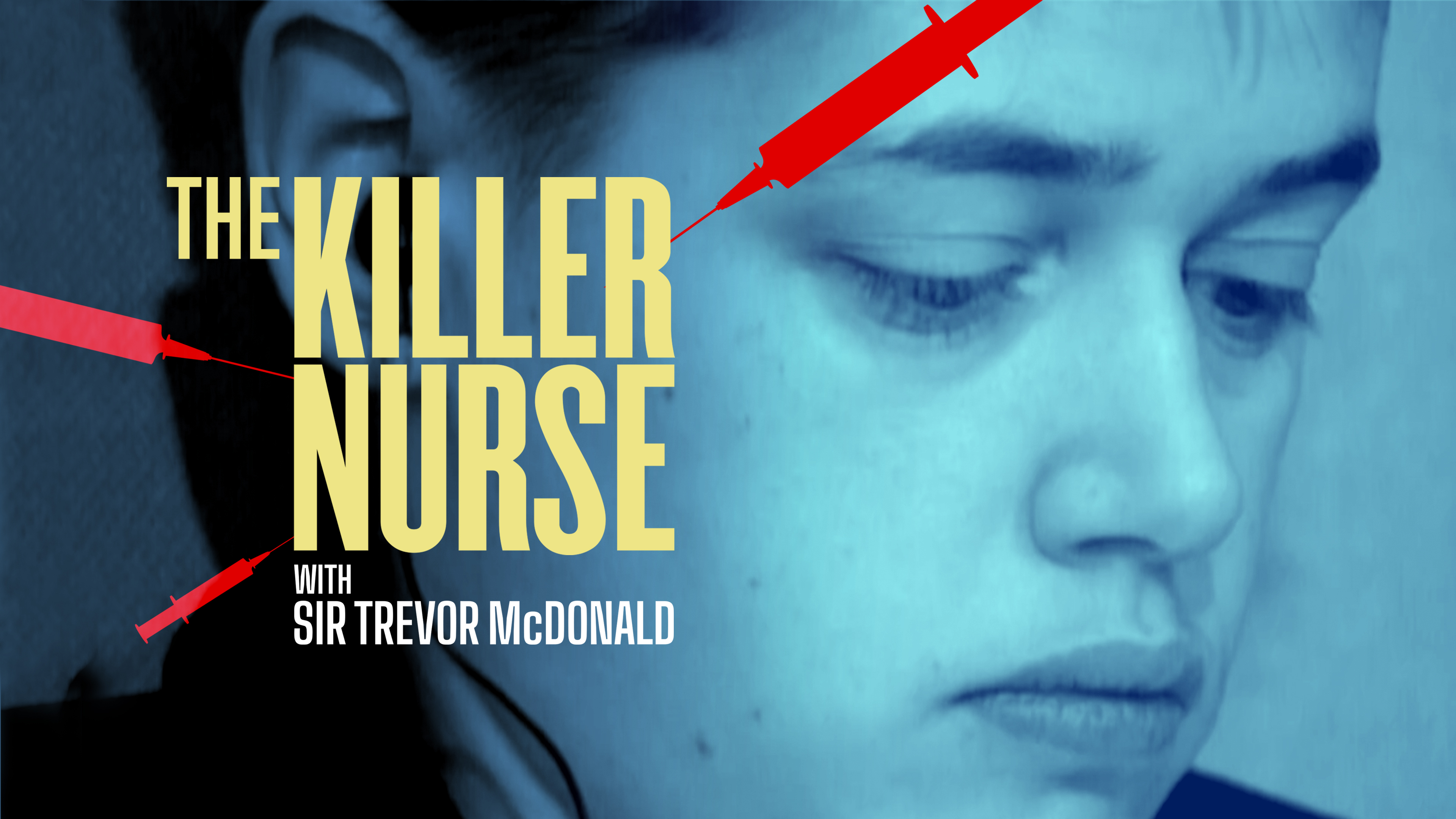Since the “Golden Age of Serial Murder,” the number of active serial killers in the U.S. has been ticking down. Why were there once so many?
◊
On July 13, 2023, 59-year-old Rex Heuermann was arrested at his midtown Manhattan office on suspicion of killing multiple women – sex workers he allegedly hired, murdered, and buried in the grassy brushes of Long Island’s Gilgo Beach. It had been 13 years since the first of 10 bodies was discovered.
When I heard the news of Heuermann’s arrest, I was astounded. As a New Yorker, I had been fascinated with the case of the Long Island Serial Killer for years. But I had come to believe that the culprit would never be found.
An intrepid British investigator pursues an infamous serial killer in this riveting MagellanTV documentary.
As with many investigations, however, much was happening behind the scenes. Heuermann apparently first came on investigators’ radar in 2022, and familial DNA helped lead police to implicate him. Investigators ultimately nabbed Heuermann after matching DNA from one victim’s hair to a pizza crust Heuermann tossed into a garbage can in 2023.
Heuermann didn’t exactly fit the serial killer stereotype. We tend to picture a loner with few close contacts who skirts under society’s radar. But Heuermann was a successful architect. He was married, the father of two children, and was reportedly respected by colleagues, friends, and acquaintances. He was someone you’d see eating lunch in a Manhattan park or boarding the subway with a leather briefcase.
Rex Heuermann mugshot (Credit: Suffolk County Sheriff's Office)
But as investigators began to scrutinize Heuermann, the mask of an affable business and family man began to slip. He currently awaits trial at the Riverhead Correctional Facility in Suffolk County, New York. Until then, the victims’ families and the invested public will need to wait for a verdict – and for the full portrait of a potential serial killer to emerge.
While interest in serial murderers has never been higher – and the arrest of Heuermann was a major development in the long, brutal legacy of serial killing in the United States – research suggests there are actually fewer active serial killers in the U.S. today than ever before. But why were there once so many of them? What accounts for the numbers going down? And are these numbers actually accurate?
Defining an Epidemic
“The Golden Age of Serial Murder.” Historian Harold Schechter coined the tongue-in-cheek term to describe the period between 1970 and 2000, during which the number of active serial killers in the U.S. rose exponentially. Over this 30-year period, some of the most notorious serial murderers stalked their victims, including Ted Bundy, Richard Ramirez, Kenneth Bianchi and Angelo Buono Jr., and Jeffrey Dahmer. Several factors underlie this rapid rise of serial murder.
One explanation is the cultural shift that occurred in the late 1960s. Women had become more independent and, pursuing the freedoms that men took for granted, they sometimes found themselves in the company of opportunistic predators. Mike Aamodt, a forensic psychologist and founder of the Radford University/Florida Gulf Coast University Serial Killer Database, told me, “In recent decades, it has been more difficult to find victims than it was in the 1980s, as people have reduced high-risk behaviors. That is, we are less likely to hitchhike, pick up hitchhikers, help a stranded motorist, and walk to school or ride a bicycle as a child/teen,” Aamodt said.
 (Source: Wikimedia Commons)
(Source: Wikimedia Commons)
The interstate highway system and urbanization both also played a role in the increase of serial murder. More efficient transportation provided violent offenders with broader access to victims; denser populations meant greater anonymity.
Another reason why the numbers spiked boils down to developing awareness of serial murder as a concept. “The increase from prior years is due in part to the term ‘serial killer’ being coined in the 1970s. Thus, searches for serial killers prior to the 1970s are more difficult because that term wasn’t used in media reports,” Asmodt explained.
Serial killers, of course, have always been with us. Centuries before a tidy term entered the public lexicon, those accused and/or convicted of such crimes went by other names – monster, vampire, werewolf. In fact, in his book American Serial Killers: The Epidemic Years 1950–2000, investigative historian Peter Vronsky suggests that the figure of the vampire and werewolf, respectively, loosely align with modern classifications of serial murderers as either organized (vampire) or disorganized (werewolf), though the category of “mixed” offender, one who doesn't fit neatly into either sub-group, has also been established.
Still, the higher numbers of serial killers during the “golden age” are undeniable. Vronsky has studied the childhoods of serial offenders during this period to determine any overlap of formative experiences. He arrives at an eye-opening conclusion. While a “broken home” isn’t necessarily a precursor to violence, a number of individuals who would go on to become offenders – such as Edmund Kemper and Dennis Rader (the BTK Killer) – were raised during or directly after WWII. As children, these individuals had fathers who were veterans who often suffered from undiagnosed PTSD; the impact of witnessing and enacting sanctioned violence in wartime would have had indelible long-term impacts on their mental health. In other words, the children who would become the monsters most feared by society may have been shaped by the most monstrous of events known to humankind: war itself.
Among other theories, Vronsky also points to the proliferation of True Detective and men’s adventure magazines, which frequently featured images of women being tortured or in bondage. While these images weren’t considered pornographic, per se, Vronsky believes they were suggestive enough to spur the imaginations of those inclined towards sexual violence.
Where Have All the Serial Killers Gone?
According to the Serial Killer Database, there were 198 serial killers active in America in 1987, with a total of 404 victims. Compare that to 2018, when there were believed to be only 12 serial killers actively murdering victims.
 (Credit: Cottonbro Studio, via Pexels)
(Credit: Cottonbro Studio, via Pexels)
Yet, America still seemingly surpasses other nations in serial killings. With 25 victims per 100,000 residents, the District of Columbia has the highest murder rate, followed by Alaska and Louisiana. The majority of the killings in the District can be traced to gang-related activity. But, according to the FBI’s 2008 definition of a serial murderer (“someone who has committed a series of two or more murders that are separate events, usually by the same person acting alone over a period of more than a month with significant time between each killing”), some gang killings do fit the umbrella term.
Asmodt has a somewhat different take on serial killer stats. “The higher per-capita rate of serial murder in the U.S. is more a function of information availability than it is something unique about the American personality,” he said. “Finding information on serial killers in the U.S. is so much easier than finding such information for other countries.” Asmodt believes that, when it comes to murder rates, America actually registers in the middle range of world nations.
Perhaps the most prolific serial killer in modern history is Pedro López, the “Monster of the Andes,” who may have murdered more than 300 people in several Latin American countries. He is currently a fugitive.
Regardless, the studies do show numbers in the U.S. are ticking down. Unfortunately, the lower rates of serial killings probably aren’t due to an evolutionary phasing out of psychopathy. Instead, changes to the criminal justice system might be responsible. “People who were imprisoned for murder or other crimes in the 1980s were more likely to be paroled than individuals who committed crimes and murder in more recent decades. In fact, 18 percent of serial killers killed at least one victim, were sent to prison, paroled, and then killed again after being paroled,” Asmodt said.
Another difference between the 1970s and today is the greater understanding of the psychological makeup of serial murderers, some of which was gleaned from extensive study of notorious killers. Psychologists, law enforcement, and even parents are better able to detect and identify warning signs in adolescents (such as animal abuse), which may also be leading to intervention and prevention of actual violence against human beings.
Technological and scientific advances have also made evading capture less likely for serial killers. Given the ubiquity of surveillance cameras, it’s simply harder than ever before to get away with murder – not to mention multiple murders. Furthermore, in today’s plugged-in world, it’s nearly impossible to avoid having a traceable digital footprint.
The growing use of forensic DNA to track killers has also been a game changer. Not only does the CODIS (Combined DNA Index System) database compile DNA samples from known offenders, but even those samples taken from crime scenes decades ago can now be traced to offenders via familial genetic DNA. It’s potentially a very powerful deterrent for would-be killers.
Disproportionately Targeted
It’s a stark statistic. Indigenous women make up only two percent of the U.S. population, but their murder rate is 10 times higher than the national average. Murder is also the third leading cause of death for Native women.
 (Credit: Jens Johnsson, via Pexels)
(Credit: Jens Johnsson, via Pexels)
The reasons for these disproportionate numbers are myriad. They include socioeconomic factors that might be more broadly traced to generational trauma: cycles of poverty, a higher prevalence of drug and alcohol abuse on American Indian Reservations, and transient lifestyles among some Indigenous women.
Additionally, jurisdictional conflicts play a role when it comes to investigating crimes against Native women. It’s not always clear whether a given investigation is the domain of tribal police or the FBI. This confusion can result in delays and a lack of coordination among law enforcement officials.
Because many cases of abduction and/or murder of Indigenous women go unsolved, it’s difficult to determine whether these women are being sex-trafficked, murdered by domestic partners, or are the victims of serial murderers as yet to be caught and convicted.
Many criminologists believe that today’s missing women, Indigenous and otherwise, may indeed be the victims of killers working as long-haul truck drivers traversing the highways of America.
Evidence also suggests that missing individuals of color traditionally receive less media coverage than their white counterparts. Journalist Gwen Ifill created a name for this phenomenon, coining it “Missing White Woman Syndrome.” According to the National Crime Information Center, in 2016, there were 5,712 reports of missing American Indian and Alaska Native women and girls. However, the U.S. Department of Justice’s federal missing person database, NamUs, logged 116 cases. While, arguably, the media landscape has become more equitable in its crime coverage, there’s much more work to be done.
There’s another victim demographic that is frequently overlooked. These are typically elderly, infirm, or otherwise vulnerable individuals who are murdered by their caregivers, typically via lethal injections or ingestion of medications or poisons. In fact, Charles Cullen, a former registered nurse in New Jersey and Pennsylvania, may be the most prolific serial killer of all time. While he’s confirmed to have murdered 29 patients, it’s widely believed the numbers could be as high as 400.
Sir Trevor McDonald sheds new light on the case of Beverly Allitt in The Killer Nurse.
While Cullen was ultimately convicted of his crimes, because many of the patients under the care of a medical murderer are already unwell and perhaps nearing death – and medical institutions are frequently overwhelmed and understaffed – the deaths often go undetected. Medical murderers are a disturbing reminder of how, regardless of stereotypical perceptions of what serial killers “look” and “act” like, many are living, perhaps thriving, in plain sight.
An Obsession Out of Sync
Despite the enduring fascination with serial murderers, as evidenced by documentaries, true crime podcasts, films, and more, if the numbers are accurate, today, you’re less likely to meet a serial killer than your grandma was. (And in my grandma's case, she certainly did.)
It’s an uncomfortable question, but, if would-be serial killers are consciously refusing to act on their desires to enact violence, how or where are they channeling these impulses? The answer may be found in online communities where, for better or worse, fantasy scenarios shared by like-minded individuals have a chance to be entertained. Such chat rooms in the recesses of the dark web are places the majority of us would never tread. But perhaps, as long as a violent impulse is satiated via fantasy alone, the numbers of serial murders will continue to decrease.
So, what accounts for the ongoing fixation on serial murder? (Even more puzzling is that, overwhelmingly, women are the primary consumers of true crime stories.) Perhaps it’s human nature to be drawn toward the extremes of human behavior. Maybe this phenomenon could be rooted in the desire to understand risk factors that might make an individual more susceptible to a serial killer's predation. Or, perhaps more likely, we each carry an innate curiosity about the areas of darkness that lurk within us all.
Ω
Matia Madrona Query is a freelance writer and the editor of BookLife, the indie author wing of Publishers Weekly. She lives in New York’s Hudson Valley.
Title Image credit: Adobe Stock




